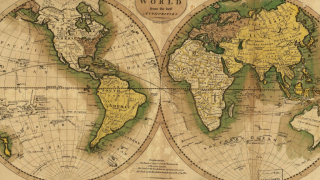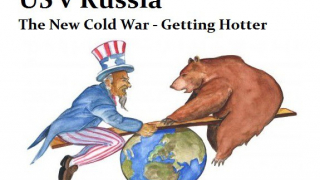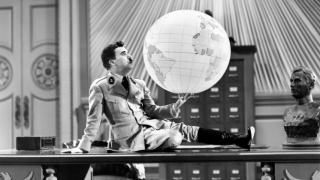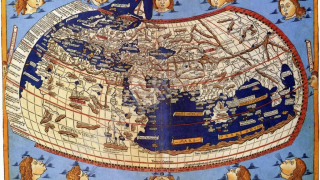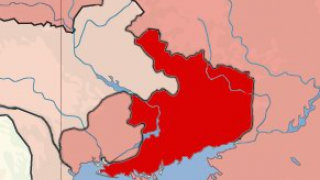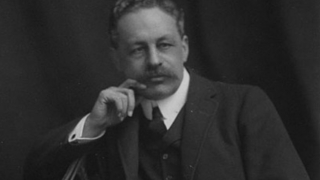The geopolitics of Cambodia: destruction and reconstruction
Cambodia, with an area of 181,035 square kilometers, is located in the southern part of the Indochinese Peninsula and borders Vietnam to the east and southeast, Thailand to the west and northwest, Laos to the north, and the Gulf of Thailand to the southwest. From the 2nd century AD to the mid-15th century Cambodia was a very powerful kingdom in the Indochinese Peninsula, which gave birth to the world-famous Angkor culture. After the 15th century, Cambodia's national power declined day by day. In 1863 Cambodia became a French colony and was invaded by Japan during World War II. On November 9, 1953, Cambodia, after suffering, finally gained independence. But Cambodia, which had just gained independence, faced the same problem as many newly independent nation-states: the escalation of the global Cold War.
Under the influence of the Cold War, diplomatically, Cambodia evolved from initial neutrality to swinging between the two camps of East and West through the power of different forces and direct military conflict with its powerful neighbors from time to time. But ideological conflict is not enough to explain the upheavals Cambodia experienced during the Cold War. Leifer Michael believes that “since the decline of the ancient Khmer Empire, geopolitics has influenced Cambodia's future fate” [1]. British journalist William Shawcross was of the same opinion, “Cambodia is a victim of its geography and immature politics” [2].
Cambodia's foreign policy during the Cold War
Since independence from French colonizers in 1953, the Cambodian people, led by King Sihanouk, have cultivated tenuous independence and national sovereignty. During the Cold War, however, it was very difficult for Cambodia to achieve this goal. For this reason, Cambodia had to adopt a neutral foreign policy and practice equidistant diplomacy between the two camps of East and West, hoping for a chance to live in the interval between the two camps to free Cambodia from the threat of war. For this reason, at the beginning of its independence, Cambodia firmly rejected strong pressure from the U.S.-led Western camp and refused to join the U.S.-led Southeast Asian Treaty Organization. However, Cambodia's foreign policy from the beginning has been distinctly pro-Western. Indeed, on the one hand, since Cambodia's independence there has been a dispute between republican and monarchist factions. Under the influence of the Cold War, the right-wing republicans aligned themselves with the Western camp and the left-wing republicans with the socialist camp. However, since Cambodia's two powerful neighbors, South Vietnam and Thailand, were both aligned with the Western camp, Sihanouk planned to adopt a pro-Western strategy of “neutrality” to gain U.S. support for peace, neutrality, territorial integrity and sovereignty over Cambodia.
However, as the Vietnam War escalated, the United States increasingly sought to draw Cambodia into the Western camp to prevent it from falling into the hands of the Communist Party. Since Cambodia's independence, the United States has provided Cambodia with a total of $404 million. The importance of this aid is obvious to Cambodia, which was in a state of turmoil. However, in 1963, as the international and domestic situation evolved, Sihanouk decided to break away from U.S. economic and military aid. He also nationalized domestic banks and import-export trade [3].
After severing ties with the United States in 1965, Cambodia turned to the socialist camp for help. Cambodia's diplomatic turn had two immediate consequences. On the one hand, the U.S. government was infuriated by Cambodia's transition to socialism, and Nixon secretly authorized the bombing of Cambodian territory.
In the first five years of the 1970s alone, the United States dropped 540,000 tons of bombs on Cambodia, more than the total amount dropped by Allied forces on Japan during World War II [3]. 150,000 people died as a direct result of the bombings in Cambodia. On the other hand, while Sihanouk was abroad, on March 18, 1970, with U.S. support, Sihanouk's opposition staged a coup and established a “Khmer Republic,” led by Lon Nol. However, when the Americans, who had lost the war in Vietnam, finally withdrew from the Indochinese region, the Khmer Republic, which had lost American support, was soon overthrown by the Khmer Rouge on April 17, 1975. From 1975 to 1979, Cambodia was renamed “Democratic Kampuchea,” with Pol Pot at the helm.
Soon after the establishment of Democratic Kampuchea, border disputes with neighboring countries began to arise. On the border issue, Cambodia first fought with Vietnam and then with Thailand and Laos. The history of territorial disputes between Vietnam and Cambodia dates back to Vietnam's expansion in the 17th century, the last disaster of French settlers. In 1979, the conflict between Vietnam and Cambodia finally broke out and the Cambodian people began a 13-year struggle against Vietnam to save the country. Cambodia became a geopolitical chessboard and geostrategic wedge for the world's major geostrategic players and political forces of all stripes who engaged in geopolitical contention around the Cambodian issue.
First, the interplay and interaction between China, the USSR and the United States in resolving the Cambodian issue. The USSR supported Vietnam, and China strongly opposed Vietnam's aggression against Cambodia and sided with the Cambodian resistance along with ASEAN. While supporting its Southeast Asian ally Thailand, the United States also morally supported the international community in working with China to isolate and punish Vietnam. The United States then declared that it would not establish diplomatic relations with Vietnam unless the latter withdrew its troops from Cambodia and increased its military power in the Pacific to compete with Soviet expansion in Southeast Asia. Since then, China and the United States continued to assist the Cambodian resistance group against the Vietnamese army, which was supported and aided by the Soviet Union.
Only when Sino-Soviet relations were restored and American-Soviet relations weakened did the three great powers, China, the Soviet Union and the United States, begin to engage on the Cambodian issue. The three countries and parties involved in the Cambodian issue agreed to resolve the issue at the 1989 Paris International Conference. This ended the decades-long conflict between Cambodia and Vietnam. However, the Soviet Union, the United States and China played geopolitical games at the Paris International Conference. The resolutions reached on the decade-long conflict in Cambodia were only a framework for keeping Indochina and its neighbors as pawns of a larger postwar superpower, as were the resolutions reached on establishing peace in Southeast Asia.
In October 1991, Cambodia initiated an internal peace process by signing the Paris Agreement to resolve the country's geopolitical crisis. In terms of sharing the geostrategic zone, Cambodia also returned to the East Asian geopolitical zone due to the withdrawal and weakening of the superpower [4]. However, as Cambodia has been war-torn during the Cold War for too long, its internal geopolitics has also been undermined by the resonance of internal and external wars since then. Cambodia's peace process in the 1990s was dominated by unrest and poverty. It was not until 1998, when the main forces of the Khmer Rouge regime surrendered to the Royal Government of Cambodia and the Khmer Rouge forces disintegrated completely, that the political situation in Cambodia could ease.
Cambodia's post-Cold War geopolitical rebound
The new changes in Cambodia's post-Cold War internal geopolitics are mainly manifested in the fact that internal factional political struggles have undergone two differentiations and combinations, namely the third period of differentiation and combination (late 1980s-early 1990s) and the fourth period of differentiation and combination (1997-2014). The third period is manifested by the struggle and rivalry among the four main parties: the Cambodian National Unity Party, the Phuentsinpek Party, the Khmer Liberal Buddhist Democratic Party, and the Cambodian People's Party; in the fourth period, Hun Sen organized a coup in 1997 to overthrow the Ranarid government. In 1998, the People's Party and the Phunchinpek Party came to power. The rise of the Rainsy Party after its reorganization into the National Salvation Party and the formation of a common balance and pattern among the three parties.
In the third period of differentiation and combination, all Cambodian political factions maintained balanced relations with foreign political forces in international relations, based on the needs of post-conflict reconstruction; in the fourth period, relations between Hun Sen-led Cambodia and the United States and other Western countries went through phases of deterioration, sanctions, and reconstruction. Relations with China have moved from the establishment of a cooperative strategic partnership to the establishment of a comprehensive strategic partnership and the advancement of a comprehensive strategic partnership. Economic, trade and political relations with Japan have steadily strengthened, and the relationship with ASEAN is evident in the fact that Japan has become a member of ASEAN and has twice held the rotating chairmanship of ASEAN.
Since then, Cambodia's geopolitical role in ASEAN integration, South China Sea geopolitics, and the Greater Mekong subregion has gradually become more prominent, so in terms of foreign relations, Cambodia has also become a “geo-power” arena for foreign policy power games.
Sources:
[1] Leifer, Michael, “The international dimensions of the Cambodian conflict”, International Affairs (Royal Institute of International Affairs), 34 (1975).
https://www.jstor.org/stable/2615834
[2] William, Shawcross, “The quality of mercy: Cambodia, the Holocaust, and modern consciousness”, New York: Simon and Schuster, 1984.
https://www.amazon.it/Quality-Mercy-Cambodia-Holocaust-Conscience/dp/0006369723
[3] Tully, John A, “A dhort history of Cambodia: from empire to survival”, New South Wales: Allen &Unwin, 2005.
https://www.amazon.com/Short-History-Cambodia-Empire-Survival/dp/1741147638
[4] 方天建,何跃m 冷战后东南亚地缘政治变化中的大国战略调整述评[J], 世界地理研2013(3):30-40.
Translation by Costantino Ceoldo


